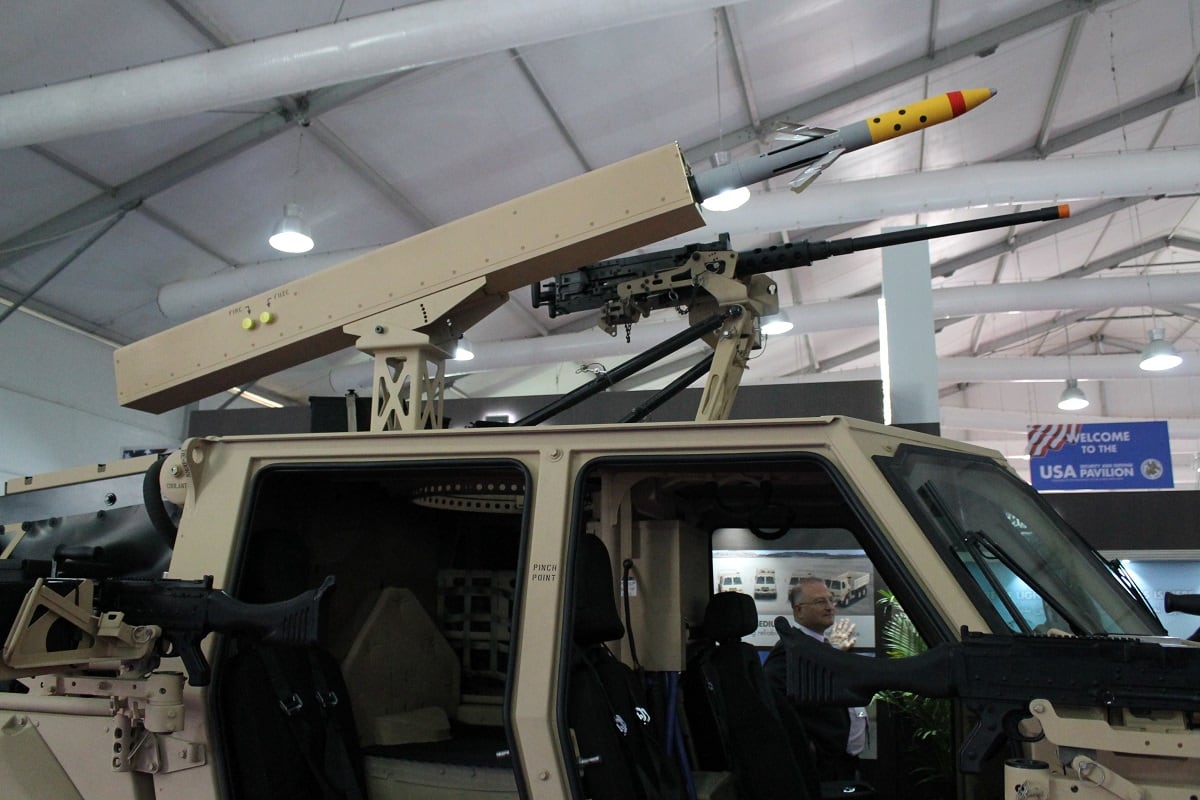AMMAN, Jordan ― Exceptionally notable at last week’s Special Operations Forces Exhibition in Jordan was the large presence of local and international light tactical products to support special ops fighting the wave of regional threats.
“The new type of threats faced today requires the use of light vehicles able to meet the demand of the countries confronting terrorism in an asymmetric environment where the assemblage of terrorist groups is becoming more concentrated in residential areas,” said Abdallah Al Salman, marketing and communication manager with the Jordan-based KADDB Investment Group.
Forecast International analysts predict the global light, wheeled vehicle market will produce more than 36,000 units worth at least $30.9 billion through 2024 ― despite ongoing worldwide economic difficulties.
“In order to counter this new type of threats, you certainly need smaller and lighter, high-maneuverable vehicles. And as an example, KIG has worked on developing Al-Maha and Al-Washaq as a solution to customers that require smaller vehicles to maneuver in narrow neighborhoods and streets,” he added.
Both Al-Maha and Al-Washq were developed after KIG received feedback from its local and international customers, according to Al Salman, who noted that the Al-Jawad vehicle is sometimes considered too large to effectively counter the “new type of threats.”
“The two vehicles are able to carry eight personnel in total (six plus two) in comparison with Al-Jawad, which can carry a total of 10 personnel. But what’s common is the high level of protection,” he said.
RELATED

A fourth-generation vehicle, the Al-Jawad serves as an internal security vehicle and provides a high level of protection standards at the CEN B6 level of protection. It follows the success of its three previous generations.
On display for the first time during SOFIX was KIG’s new Al-Mared eight-wheel drive armored vehicle and its Al-Faris six-wheel drive armored vehicle. Both come with the Stanag L3 level of protection, upgradable to Stanag L4.
For its part, Oshkosh Defense showcased its Special Purpose All-Terrain Vehicle technology demonstrator at the show, after having it tested in an unnamed Middle Eastern country in 2014.
The S-ATV is lightweight and agile, and is advertised as being able to meet a range of mission requirements for armed forces in the U.S. and the Middle East, among other areas around the globe.
“There’s always a trade-off in weight classes, and as you get lighter, you generally accept far less protection,” explained Mike Ivy, senior vice president of international programs and global product support at Oshkosh Defense.
“The vehicle that the customers want is driven by the operational environment at a given time. In some cases, they need more speed, greater range and less protection; and in other cases, they need greater protection, less speed and transportability,” he added. “We feel like we are uniquely positioned to offer vehicles across that spectrum of missions.”
For Anthony Winns, the head of Lockheed Martin’s Middle East and Africa regional business, pointed at cost and size as a main focus for customers.
“A lot of the focus is on cost and miniaturization. And when you’re able to reduce cost, that means you are able to buy more weapons,” he said. “The economies are dictating that you want to be able to spend your money more effectively, and governments want to do that. The lighter weapons ― the less costly and the more effective ones.”
Chirine Mouchantaf contributed stories on Middle East defense and wrote for SDArabia, an Arabic security and defense magazine.







